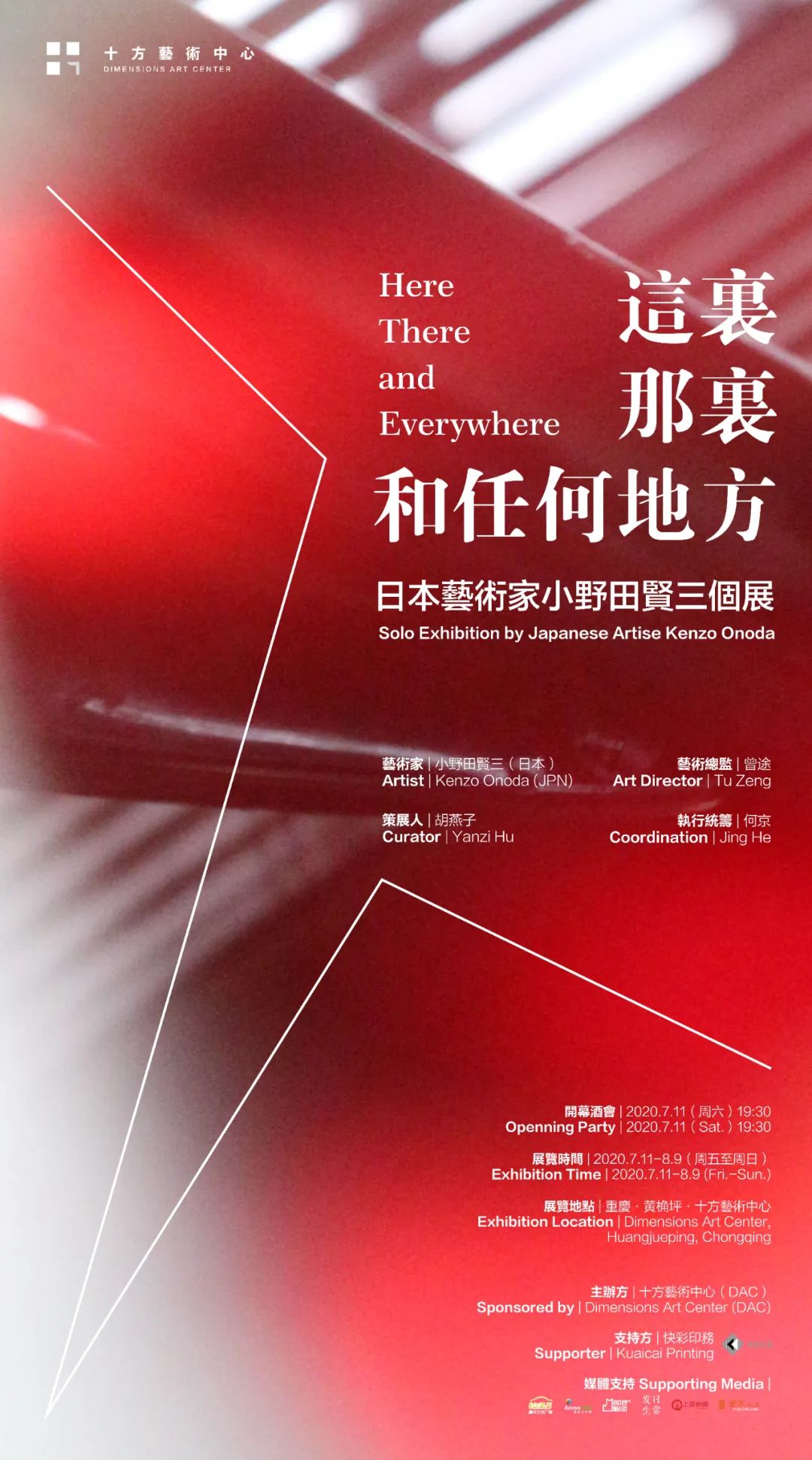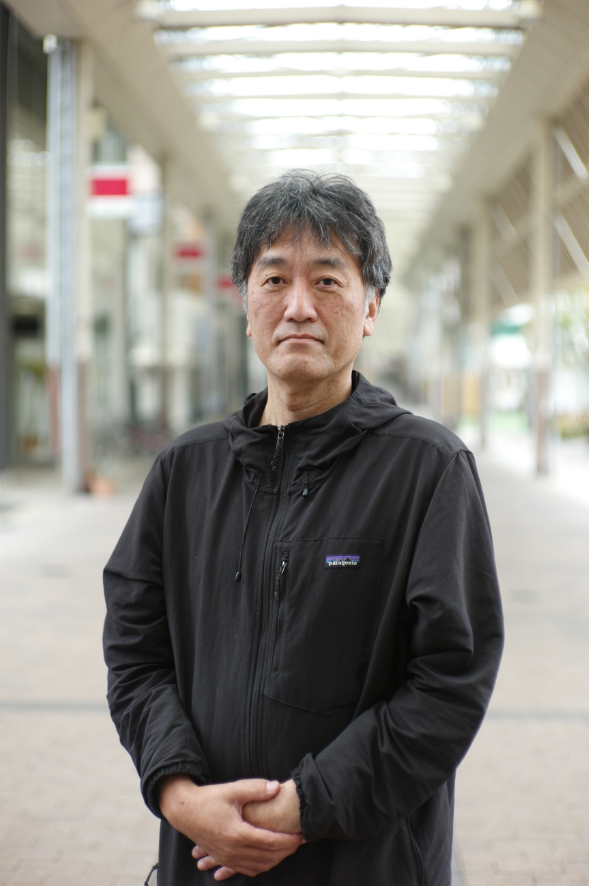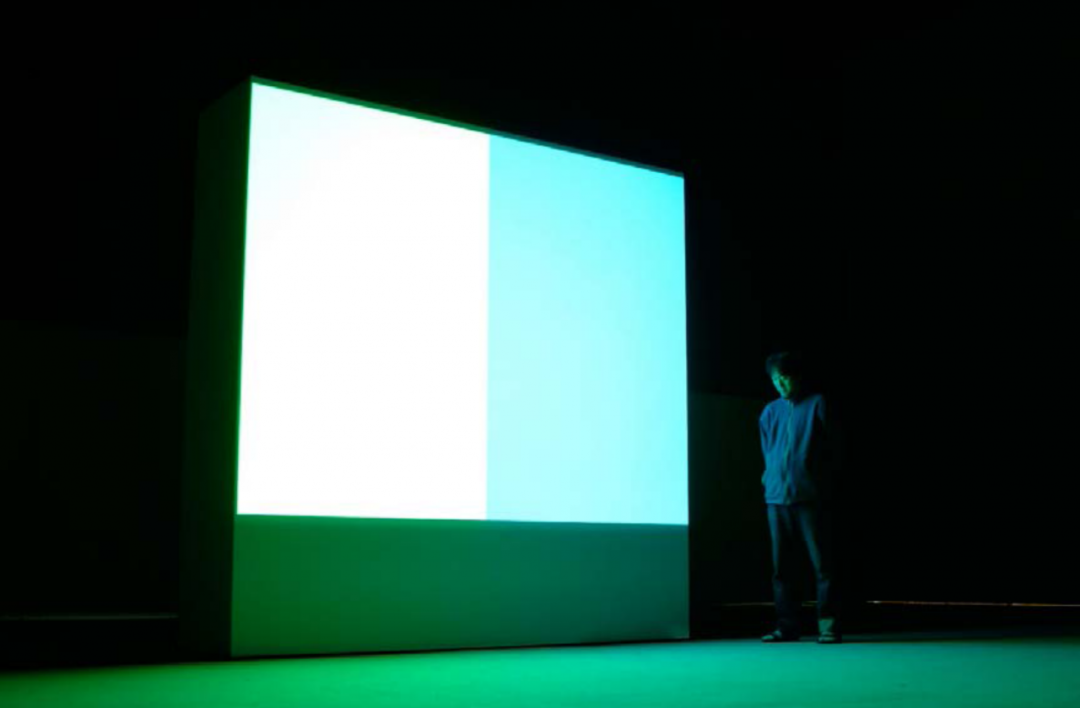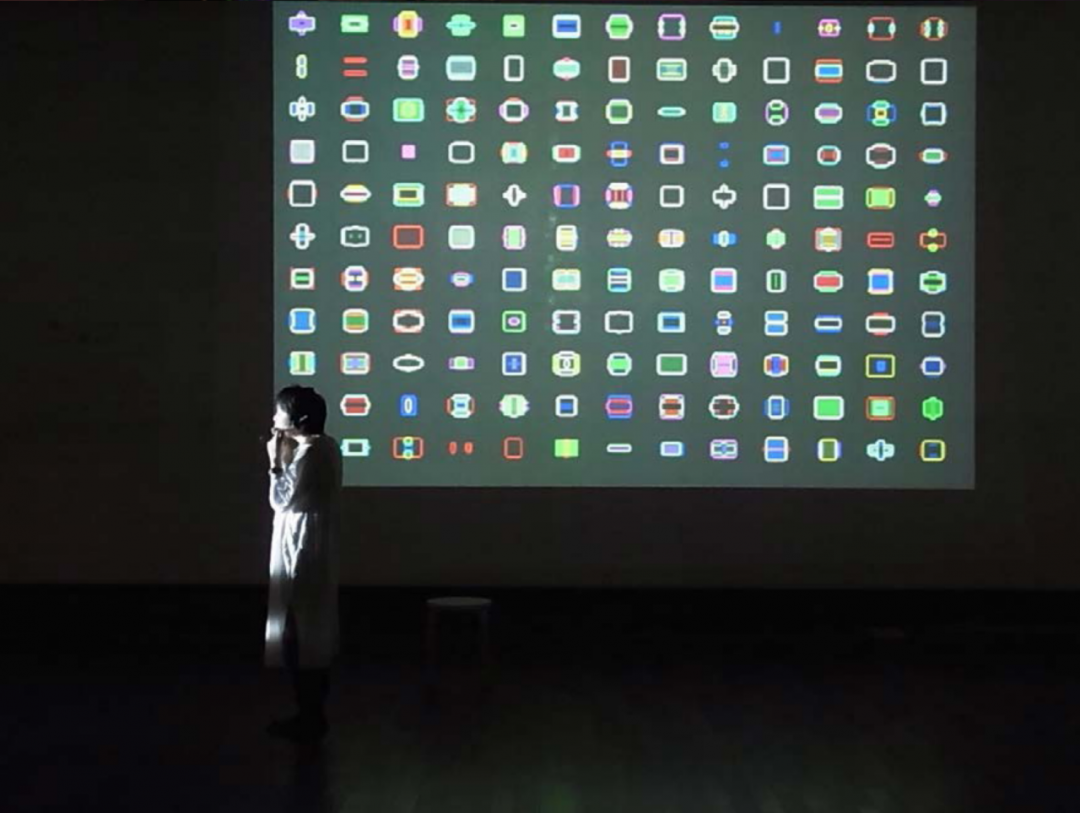歷史網站|Historical Website:
十方展覽 |《這裏,那裏,和任何地方》日本藝術家小野田賢三個展


從60年代開始,日本社會經歷著激烈的現代變革,外來思潮與本土文化在相斥中相融,經濟進入高速增長期。小野田賢三生長其中,從一個前橋的“鄉下小孩”來到東京,滿眼都是美國為代表的西方文化,以及在西方文化下形成的典型城市景觀,他找到生存之道的同時也逐漸找到了藝術之路的鑰匙。在他看來,面對時代的變化,傳統文化遭遇現代化進程的種種衝擊,應該思考的不是把傳統保留或遺存下來,而是怎麼打破傳統;他認為經過碰撞交融後最終留下的或許才是真正需要保護的傳統。
Since the 1960s, Japanese society has undergone fierce modern changes. Foreign thoughts and local culture have merged in mutual exclusion, and the economy has entered a period of rapid growth. Kenzo Onoda grew up and came to Tokyo as a Maebashi’s “country child”. His sight were full of the culture of the Western world represented by the United States and the typical urban landscape formed under the culture of the Western world. While he found the way to survival, he gradually found the key to the road of art. In his view, when traditional culture encounters various impacts of the modernization process and changes in the times, people should think about not keeping or surviving parts of the tradition, but how to break the tradition. He believes that the “tradition” that is ultimately left after collision and integration may really need to be protected.
他的個人經驗反映出時代變化的一個切面。
His personal experience reflects a facet of changing times.
(點擊此處瞭解小野田賢三的成長與時代的關聯)
(Click here to understand the connection between Kenzo Onoda’s growth and the times)
作為一名專業的物理工程師,小野田賢三從網路工作延展到藝術創作,成為職業藝術家已有20年,他一直嘗試將技術與藝術相結合,以持續探索當代藝術的邊界。面對不斷革新的技術以及即將到來的人工智慧時代,藝術家認為,我們無需糾結是否應該持支持或反對的態度,在科技消失之後的生活,才是值得我們思考的點。
As a professional physical engineer, Kenzo Onoda has expanded from network-related work to artistic creation, and has been a professional artist for 20 years. He has been trying to combine technology and art to continue to explore the boundaries of contemporary art. In the face of constantly innovating technologies and the coming era of artificial intelligence, the artist believes that we do not need to struggle with whether we should hold a support or opposition attitude, and life after the disappearance of technology is the point worthy of our thinking.
藝術家帶著他的“認識論”進入藝術創作“方法論”的構建,在近些年的創作中,小野田賢三主要將電腦特有的語言和程式功能解體、重構來生成作品,通過這些作品對人類的知覺提出疑問。
The artist took his “epistemology” into the construction of the “methodology” of artistic creation. In recent years, Kenzo Onoda mainly disintegrated and reconstructed the unique language and program functions of the computer to generate works. He questioned human perception through these works.
例如,在投影儀中放映出的以純白畫面為視覺內容的動畫作品,看起來像是在錄製白色的牆壁,但仔細觀看,畫面的邊緣部分會收縮、膨脹並搖晃著。(此作品也將會在本次展覽中呈現)。
For example, the pure white screen played by the projector looks like it is recording a white wall, but if you look closely, you will find that the edge of the screen is shrinking, expanding, and shaking. (This work will also be presented in this exhibition).

截帧自应用程式 “PARADE”
Frame capture from application “PARADE”
又例如,他只鍵入使電腦生成圖像的程式而產生的應用程式“PARADE”,通過觀眾合作來持續自動生成隨機的圖形組合。這些矩形圖形的大小、長寬比和顏色圍繞中心點的改變而變換,技術與藝術之間無縫銜接(或者說難以區分),由人機協作完成了極簡主義繪畫般的視覺呈現。
For example, he only typed the program that causes the computer to generate images to produce the application “PARADE”, and continued to automatically generate random graphic combinations by working with the audience. The size, aspect ratio and color of these rectangular figures changes around the changes of the center point. Technology and art are seamlessly connected (or indistinguishably), and the minimalist painting-like visual presentation is completed by human-computer collaboration.
讓小野田賢三好奇的是,顏色在多大程度上開啟了無意識的語言交流的可能性,對他來說,這是一種作為感官的交流——一種知識的形式。在這種知識中,對物體和上下文的評估完全基於對感官刺激的直接物理反應。
What makes Kenzo Onoda wonder is to what extent the color expands the possibility of unconscious communication. For him, this is a sensory communication—a form of knowledge. In this kind of knowledge, the assessment of objects and context is based entirely on direct physical responses to sensory stimulation.
毫無疑問,今年的新冠疫情會成為全球現代化進程的一個拐點,這個拐點的出現似乎突然,但絕非毫無端倪。作為敏感的藝術創作者,小野田賢三在2019年創作的作品似乎是對這種“端倪”的捕捉。
There is no doubt that this year’s COVID-19 will become an inflection point in the process of modernization. The emergence of this inflection point seems to be sudden, but it is by no means clueless. As a sensitive art creator, Kenzo Onoda’s work in 2019 seems to capture this “clue”.

《蝴蝶、斑马、月光和童话故事》2019
Butterflies, zebras, moonbeams and fairy tales. 2019
在這個作品中,藝術家坦言,玻璃珠子代表某種原有平衡的被打破。与 “PARADE” 系列作品中所探討的色彩對於人的感官交流的刺激關聯的思考類似,《蝴蝶、斑馬、月光和童話故事》的作品中,藝術家似乎開始建立某種空間情景對於人的抽象感知的觸發,以及這種感知與當下生活現場的某種關聯。
In this work, the artist admits that the glass beads represent some kind of original balance being broken. Similar to the “sensory stimulation” discussed in the “PARADE” series of works, in the works “Butterflies, zebras, moonbeams and fairy tales”, the artist seems to have begun to establish a certain spatial scene to trigger the abstract perception of people, and some connection between perception and current life scene.
小野田賢三使用了現成品,但是又和西方裝置藝術所指涉的現代化的生產體系有明顯的不同。也許我們可以從“物派”的角度去進行解讀(藝術家本人並沒有從這個角度去談論自己的工作)。與“物派”(由“李禹煥+多摩美系”構成的“物派”主體)通常使用自然的、沒有經過人為加工的石、木、水等等創作方式相比,小野田賢三的此類作品中並沒有使用自然材料。他傾向於呈現一種“關係”,並試著將物體所呈現的“關係”分解到時間、空間的大背景中去,而不是強調物體本身,這一點在本次展覽中會更加明確。
Kenzo Onoda has used “ready object”, But it is obviously different from the modern production system that western installation art refers to. Perhaps we can interpret it from “Mono-ha” (the artist himself did not talk about his creation from this point of view). In contrast to the natural, non-artificially-created media such as stone, wood, and water, which are usually used by the “Mono-ha” (which on the basis of “Yuhuan Li + Tama Art University”faction) ,Kenzo Onoda’s works have not used natural materials. He tends to present a kind of “relationship” and tries to disintegrate the “relationship” presented by the object into the background of time and space, rather than emphasizing the object itself. This point will be more clear in this exhibition.
本次展覽中的內容正是從小野田賢三於2019年創作的這件作品衍生而來,並進行一次大規模呈現。我更願意把整個展廳看作是一個完整的作品:紅、藍、綠、天藍、黃五種顏色玻璃珠的出現改變了原有物體的平衡,使展廳的力學磁場處在一種微妙的互相制約之間,呈現一種焦灼的狀態,回應你我所處的,被新冠疫情衝擊下的全球現場。
The content of this exhibition is derived from the work created by Kenzo Onoda in 2019 and presented on a large scale. I prefer to treat the entire exhibition hall as a complete work: the appearance of glass beads in five colors of red, blue, green, sky blue, and yellow changes the balance of the original object, so that the mechanical magnetic field of the exhibition hall is in a delicate mutual relationship. The exhibition site showed a state of anxiety, and responded to the global scene under the impact of the COVID-19.
同樣也是因為疫情,藝術家無法來到展覽現場。或者我們可以樂觀地認為,藝術家通過作品抵達了現場——在全球的封鎖中,借由“藝術”實現了某種自由。當然,藝術家的不在場和觀眾的在場,都構成了關於時間空間中“關係”的討論範疇。
Also because of the epidemic, the artist could not come to the exhibition site. Or we can be optimistic that the artist arrived at the scene through his works—in the global blockade, a certain freedom has been achieved through “Art”. Certainly, the absence of the artist and the presence of the audience constitute the discussion category of the “relationship” between time and space.
歡迎各位來到展廳,參與“關係”。
Welcome everyone, participate in the “relationship”.
■ ■ 藝術家自述 ■ ■
Text by the Artist
就“我之為我”,向世界進行發問
我是否可以成為這個社會中的個體
我在世界各地參展
在各個國家欣賞、展出自己的作品
機場、郵件都停擺
我甚至無法遊歷下一個國家。
30年來,我都以一個通信工程師和藝術家的身份生活著
我希望我的作品能將藝術概念引入充斥著數位信號的、擁擠的鏡像世界中
我既不在那裡,又在那裡。
——小野田賢三
“As a question to the world that made me who I am.
Whether or not I can be an individual in this society.
I participate in exhibitions all over the world.
I continue to visit and exhibit my work in those countries.
Airports and mails have been shut down.
I can’t even visit the next country.
I have existed as a communications engineer and artist for over 30 years.
I want my work to bring the art concept to the mirror world of the congested world with digital signals.
I won’t be there, but I will be there at the same time.”
——Kenzo Onoda

1961年出生於日本前橋,藝術家。
Artist, born in Maebashi, Japan in 1961.
1981年從大阪藝術大學藝術計劃學科音響藝術專業退學。1984年進入NTT(日本電信電話株式會社)橫濱分公司,被分配到通信設備建設部門。隨著基礎設施從電話事業向數據通信的轉變,轉入軟件設計部門,從事數據庫和數據網絡建設設計工作。
In 1981, he withdrew from the audio art major of the art program of the Osaka University of Arts. Entered NTT (Nippon Telegraph & Telephone) Yokohama branch in 1984 and was assigned to the communication equipment construction department. With the transformation of infrastructure from telephone business to data communication, he was transferred to the software design department and engaged in the design and construction of databases and data networks.
2002年,充分利用IT科技、音響心理學、現代哲學等知識而進行的先進藝術表現方式在德國、法國為首的歐洲獲得肯定,進行了多次展示。主要參加了「Parkhouse」杜塞爾多夫·北萊茵-威斯特法倫州立美術館、越後妻有大地藝術節三年展等等。
In 2002, advanced art expressions made by fully utilizing the knowledge of IT technology, acoustic psychology, and modern philosophy were recognized in Europe, led by Germany and France, and exhibited many times. Mainly participated in the “Parkhouse” Dusseldorf North Rhine-Westphalia State Art Museum, the Echigo-Tsumari Art Field and so on.
以往作品介紹︱Introduction to Previous Works

“SIRASAGIAN”/群馬縣現代美術館/高崎市,日本
“SIRASAGIAN” /MUSEUM OF MODERN ART GUNMA /TAKASAKI, JP

“一对一”/《卧铺车厢》开幕音乐会/爱丁堡,苏格兰
“ONE ON ONE” /openning concert SLEEPER /EDINBRUGH, SCO

“横滨智能照明展”/横滨,日本
“SMART ILLUMINATION YOKOHAMA” /YOKOHAMA, JP

“窗墙窃窃私语”/41号窗口/巴黎,法国
“window wall whisper” The Window 41/PARIS, FR

“树丛”/弗里兹艺术家之家/汉堡,德国
“treces” /friese Künstler haus /Hamburg, DE)
■ ■ 展覽信息 ■ ■
Exhibition Information
《這裏,那裏,和任何地方》——日本藝術家小野田賢三個展 “Here, There and Everywhere”
——Solo Exhibition by Japanese artist Kenzo Onoda
開幕時間:2020.7.11(週六)19:30展覽週期:2020.7.11 – 2020.8.9 (週五至周日14:00-18:00)
地點:重慶 · 黃桷坪 · 十方藝術中心
Openning Time: 2020.7.11(Sat.)19:30
Exhibition Time: 2020.7.11 – 8.9
(Fri.-Sun.14:00-18:00)
Venue: Dimensions Art Center(DAC), Huangjueping, Chongqing
藝術家:小野田賢三(日本)藝術總監:曾途 策展人:胡燕子
Artist:Kenzo Onoda (JPN)
Art Directior:Tu Zeng
Executive Curator:Yanzi Hu
執行統籌:何京
海報設計:史芮齊
Coordination: Jing He
Poster Design: Ruiqi Shi
主辦方:十方藝術中心(DAC)Sponsored by:Dimensions ArtCenter (DAC)
支持方:快彩印務
Supporter: Kuaicai Printing

媒體支持:Supporting Media:


郵箱 : info@chongqingdac.org
微信 : CNCQDAC
Facebook : 重慶市十方藝術中心
地址:重慶市九龍坡區黃桷坪官家林190號
 Website : chongqingdac.org
Website : chongqingdac.org
Email : info@chongqingdac.org
Wechat : CNCQDAC
Facebook : Chongqing Dimensions Art Centre & Chongqing Artists In Residency
Address : Huangjueping GuanJiaLin 190, Jiulongpo, Chongqing, CN.

